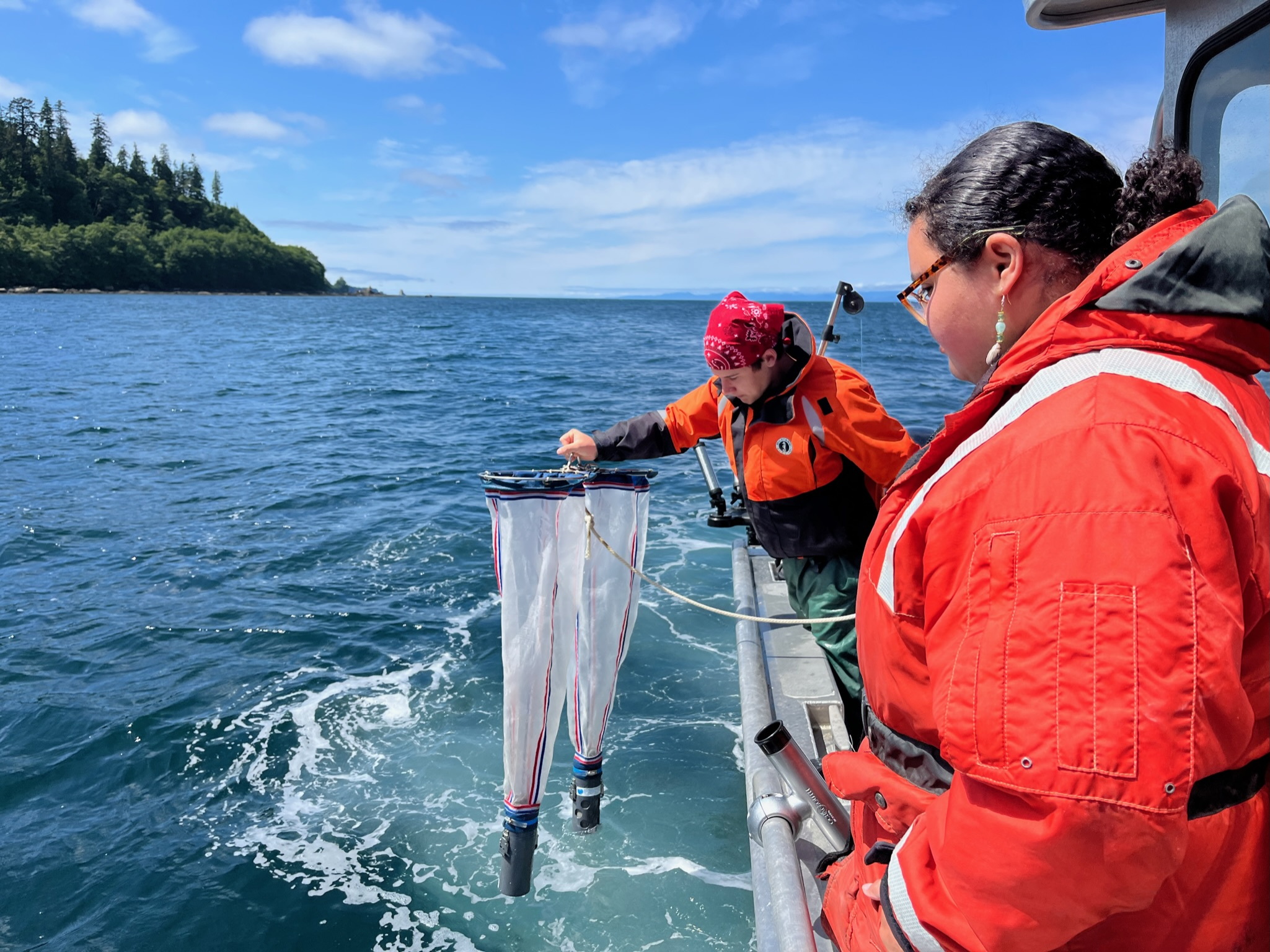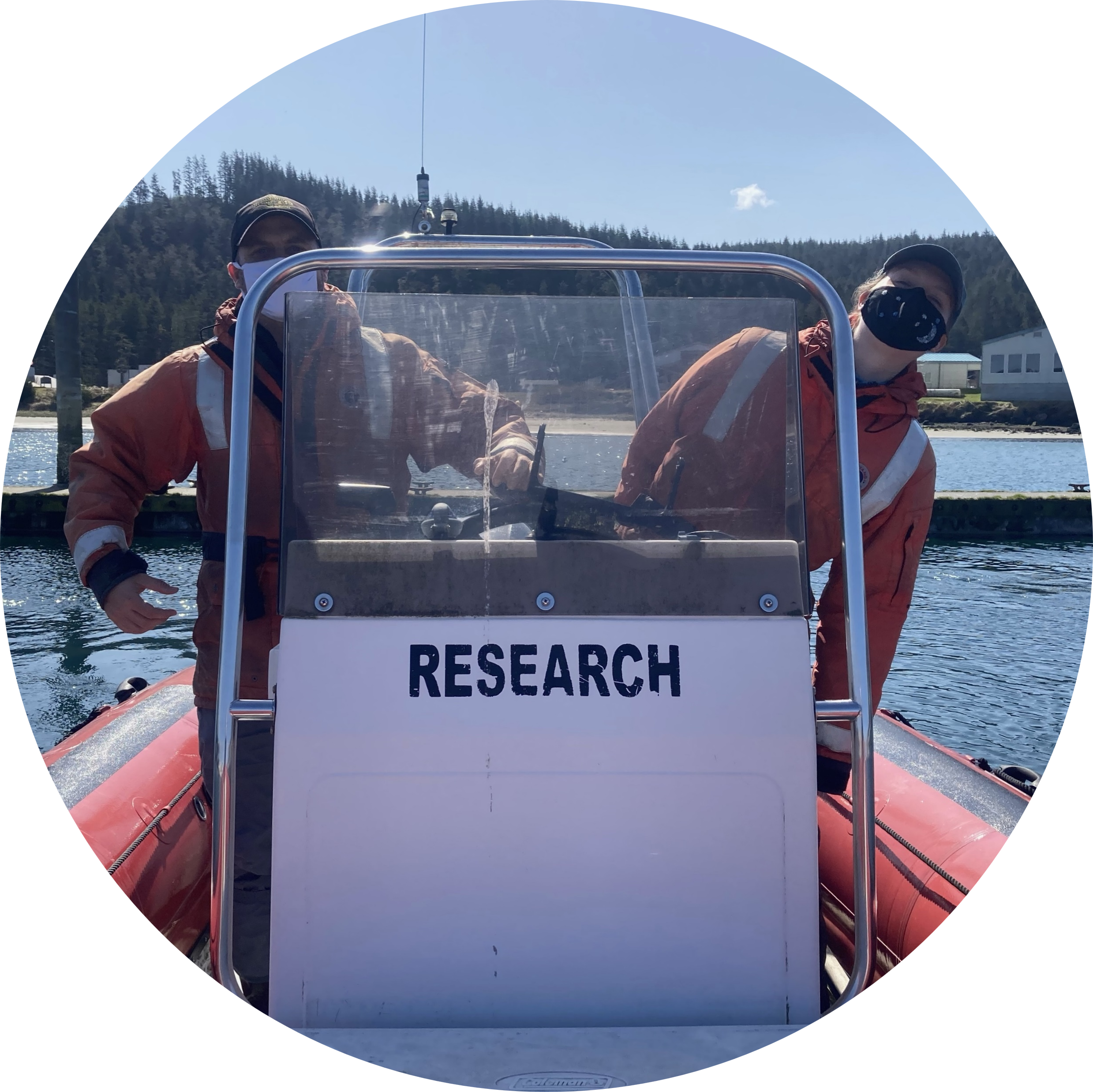Foraging Ecology
The distribution of gray whales throughout NW Washington is highly spatially and temporally variable. The Makah Tribe has been conducting prey sampling using a bongo-style plankton net since 2019 at discrete foraging locations within our research area to monitor the prey base available to gray whales and help us understand one of the potential underlying factors determining their distribution.
We published a paper in 2024 that explored the patterns of co-occurrence between feeding gray whales and concentrations of one of their important prey items - mysid shrimp. We look forward to continuing to collect and analyze this data in order to explore more concrete relationships between gray whales and their prey and link this information to their distribution throughout the wider Pacific Coast Feeding Group range.
Open Science
The published article is available open access here.
The underlying plankton tow data is published on Mendeley Data here.
A public Github Repository for the project analysis process is here.

Anthropogenic Scarring
Estimates of injury and death due to anthropogenic sources, including ship strikes and entanglement, are key to understanding mortality rates that inform population abundance estimates. We used 7 years of photos of gray whales taken in our survey area to analyze the frequency of scarring from three different source types - ship strike, entanglement, and killer whale predation attempts. We then compared our results to those from a previous study in another gray whale feeding are (Sakhalin Island) to assess vulnerability across the population.
Open Science
The published article is available open access from the Journal of Cetacean Research and Management here
A preliminary analysis was published as a working paper of the International Whaling Commission (IWC) and is available here.
The underlying data are available from Mendeley Data here.
Population Monitoring
I also assist with regular surveys of the Makah U&A to assess gray whale population abundance, movement, and survival. We photograph individuals for mark-recapture analyses; document body condition; collect biopsy samples for genetics, contaminants, and hormone analyses; and collect fecal samples for HABs detection. I conduct all types of sample collection, operate the research vessel, and am a named co-investigator on our permits.
 On our survey vessel R/V Kawad.
On our survey vessel R/V Kawad.
